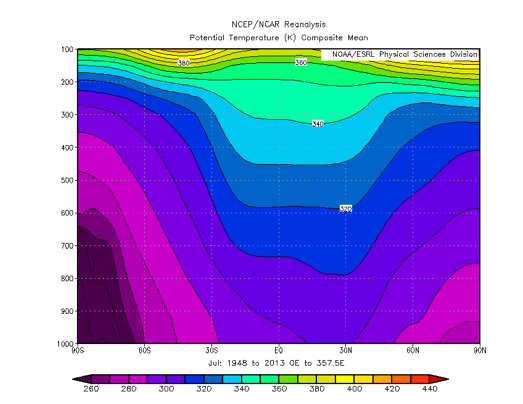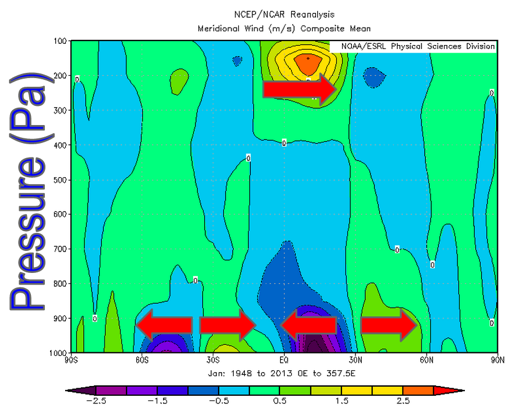...
In the tropics, the Coriolis parameter is relatively small and the influence of Earth’s rotation is weak. In this regime, the Hadley circulation prevails, transporting energy from the equator to a latitude of roughly 30N. As air over the equator warms, it begins to rise rise into the upper atmosphere. It than diverges poleward, acquiring angular momentum as it travels to higher latitudes. At the edge of the Hadley cell (30N) the air sinks to surface and begins to travel towards the equator again. Evidence of the Hadley circulation can be observed in the following NCEP reanalysis plots. The plots can be found at: http://www.esrl.noaa.gov/psd/cgi-bin/data/composites/printpage.pl
...
(Climatological plot of January 1948 to 2013)
(Climatological plot of July 1948 to 2013)
Poleward movement of fluid can is observed the following plot of zonally averaged Meridional Wind Flow. Note the surface divergence at 30 N and 30 S, where sinking air at the edge of the Hadley circulation encounters Earth’s surface.
(Climatological plot of July 1948 to 2013)
In July, the surface divergence at 30N becomes significantly weaker. The divergence at 30S appears to significantly stronger.
...

